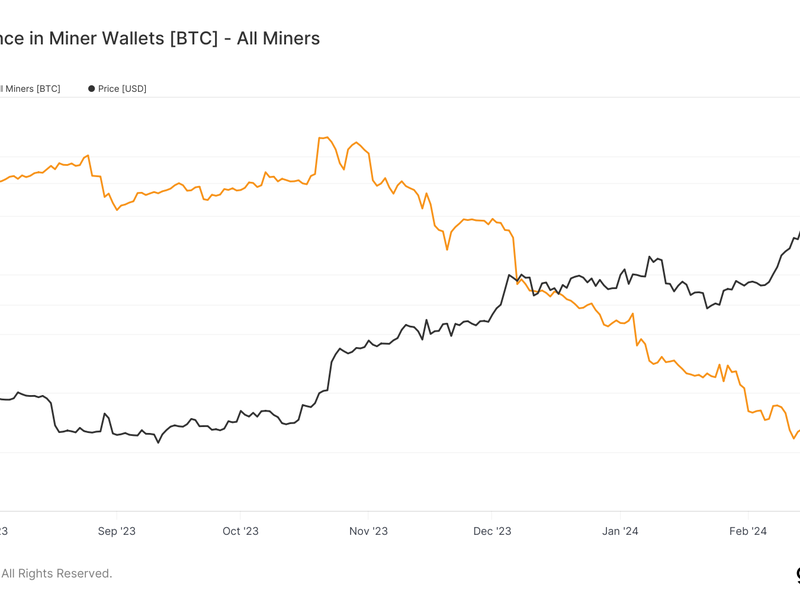Crypto Miners Still Selling Their Bitcoin as Reward Halving Looms, Blockchain Data Show

- The number of BTC held in wallets tied to crypto miners has declined by 8,426 this year, extending the slide that began in October.
- Impending reward halving and the dry season in China might explain why miners are running down their coin stashes.
The number of bitcoin {{BTC}} held by crypto miners has dropped to the lowest level since July 2021 as they run down their coin stashes ahead of the programmed halving of the revenue earned per block.
Data tracked by Glassnode shows the estimated number of BTC held in wallets tied to miners fell by 8,426 BTC ($530 million) since the start of the year to 1,812,482 BTC. The decline began in the second half of October, when miners held over 1.83 million BTC.
Miners create valid blocks, adding transaction records to the public ledger, or the blockchain. New coins emitted with each block are given to miners as a reward for the work. They also receive transaction fees.
Currently, the miners receive 6.25 BTC per block. The halving, a quadrennial event due in April, will reduce that figure to 3.125 BTC, cutting per-block revenue by 50%. To improve profitability, miners may be using their stored BTC to buy more efficient equipment so that running costs drop, said FRNT Financial, a crypto platform based in Toronto.
Read more: How the ‘Halving’ Could Impact Bitcoin
"Miners may also be inclined to sell in order to better position ahead of the halving," FRNT Financial said in a Tuesday newsletter. "This may involve purchasing more efficient mining equipment due to new economics the halving will bring."

The halving is widely seen as a stress test for miners, as it is expected to reduce revenues and boost production costs simultaneously. Industry consolidation is possible.
The prolonged dry season in the southwest of China, which typically extends from October to March/April, could be another reason for the decline in the miners' bitcoin balances. China accounts for roughly 20% of the total computing power on the Bitcoin network.
"Miners in some Chinese regions are known to bring online additional hardware during the wet season when hydro power becomes abundant. Conceivably, miners may sell during the dry season to counteract the inactivity of mining hardware," FRNT Financial said.








